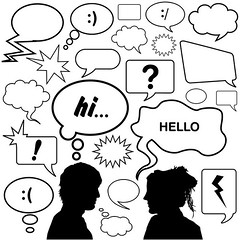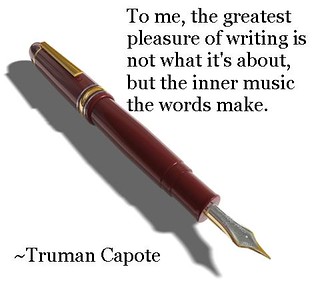
A good way to draw your reader deeply into your story is to use a variety of non-verbal cues in your dialogue. Try the following techniques to dial up your dialogue.
Facial Expressions
When a character raises an eyebrow or furrows his brow, this action gives the reader an additional clue beyond dialogue that indicates a change in the character’s emotional state. As the scene progresses and the emotional intensity rises; the character’s dissatisfaction grows into anger, for instance, the character might clamp his jaw, his nostrils may flare, or eyes narrow to a squint, his face may redden and so on. These are all commonly understood signs of anger.
To learn effective use of these cues, read classic works containing emotional encounters or watch good dramatic films with the sound turned off. Study the facial expressions of the actors and take notes of how they signal emotion. Continue reading “Dialing Up Your Dialogue”





 One of the first known usages of the term “flash fiction” in reference to the literary style was the 1992 anthology Flash Fiction: Seventy-Two Very Short Stories. Editor James Thomas stated that the editors’ definition of a “flash fiction” was a story that would fit on two facing pages of a typical digest-sized literary magazine[
One of the first known usages of the term “flash fiction” in reference to the literary style was the 1992 anthology Flash Fiction: Seventy-Two Very Short Stories. Editor James Thomas stated that the editors’ definition of a “flash fiction” was a story that would fit on two facing pages of a typical digest-sized literary magazine[ First person is a very common voice for writers to use in fiction, especially in mysteries and crime thrillers; this voice allows the reader to discover the plot as it unfolds through the protagonists eyes.
First person is a very common voice for writers to use in fiction, especially in mysteries and crime thrillers; this voice allows the reader to discover the plot as it unfolds through the protagonists eyes.
 To a certain extent, Dear Reader, today’s pontification will apply to novelists and short fiction writers as well as to those of us who specialize in non-fiction. But mostly, I’m talking to non-fic writers.
To a certain extent, Dear Reader, today’s pontification will apply to novelists and short fiction writers as well as to those of us who specialize in non-fiction. But mostly, I’m talking to non-fic writers.